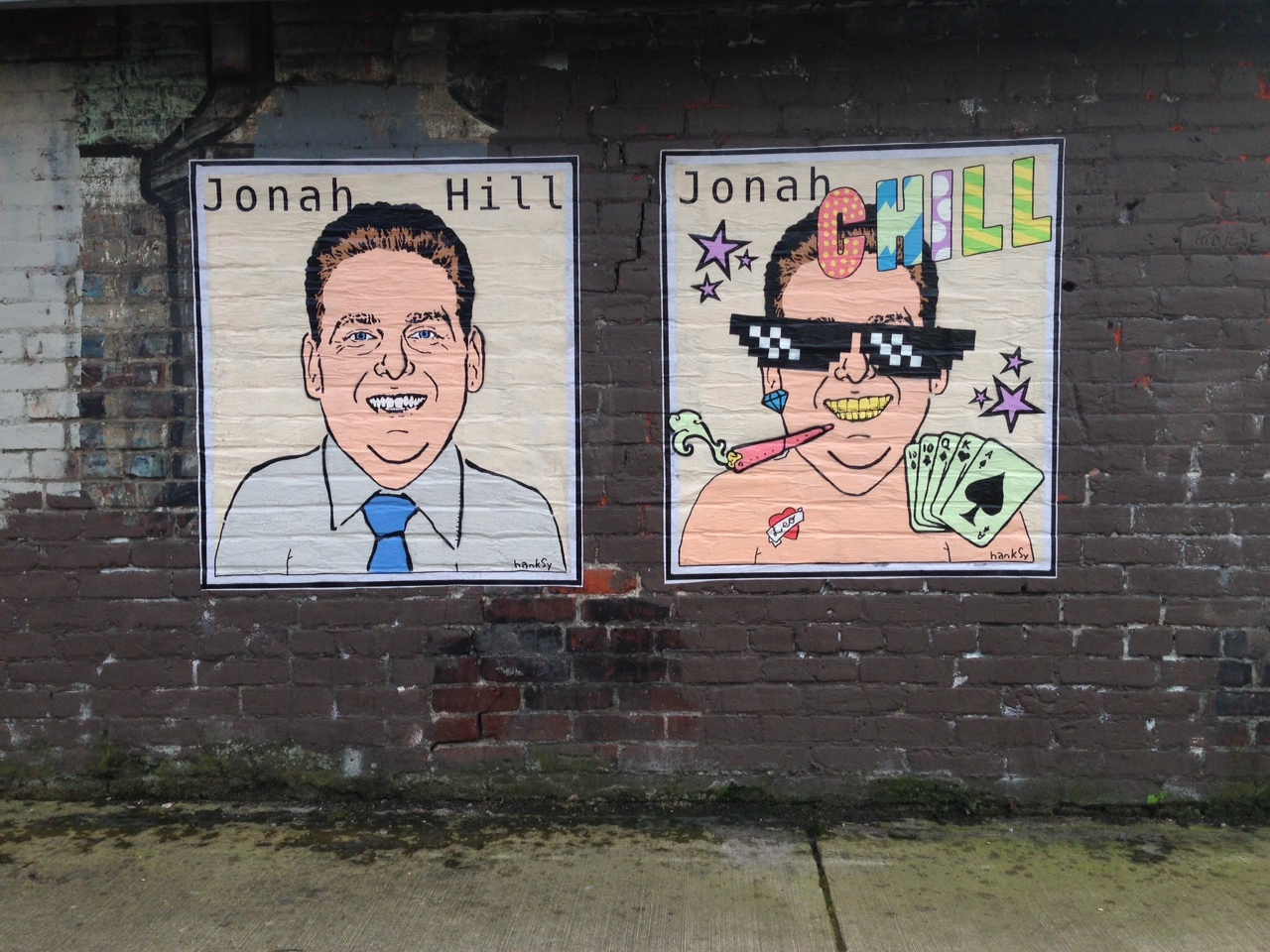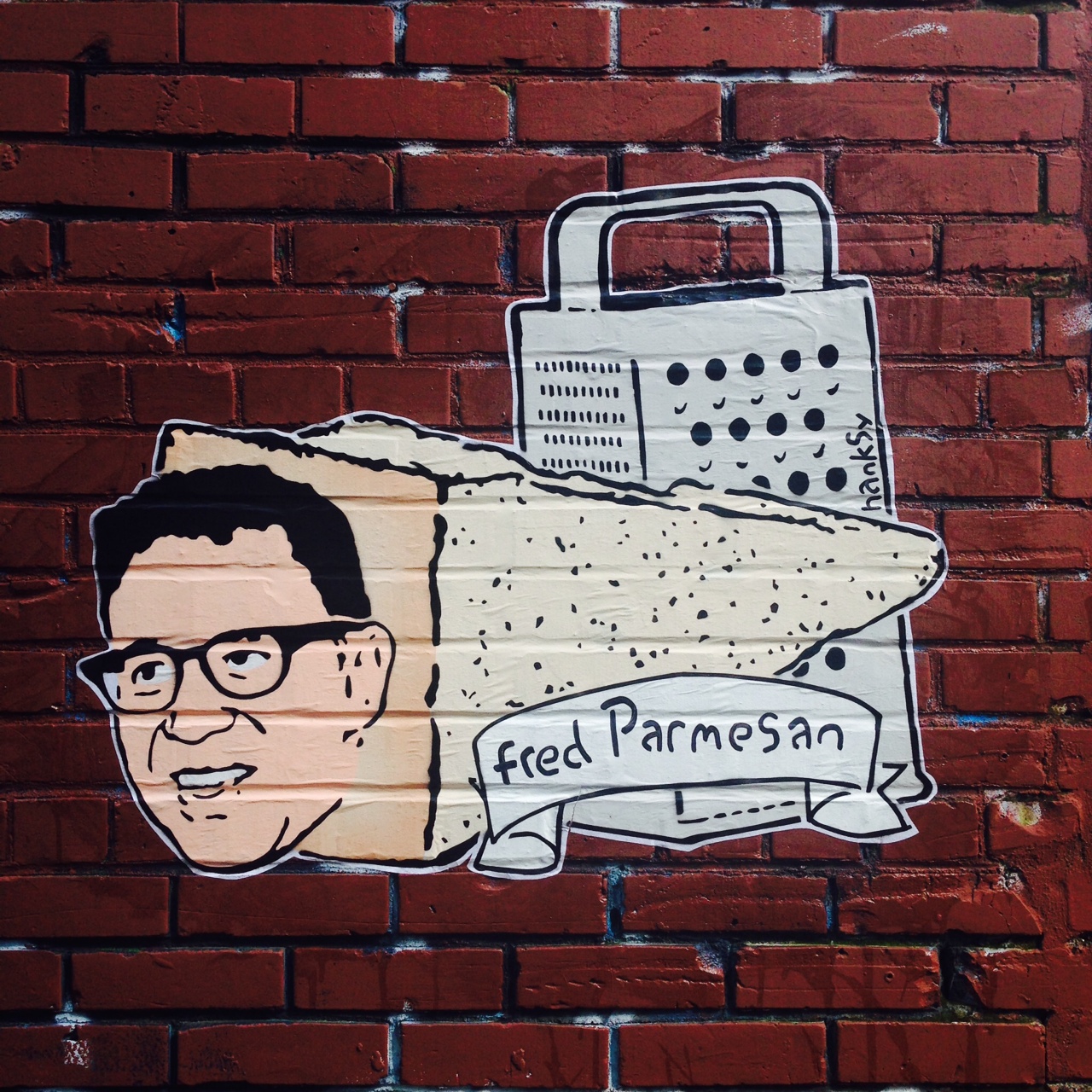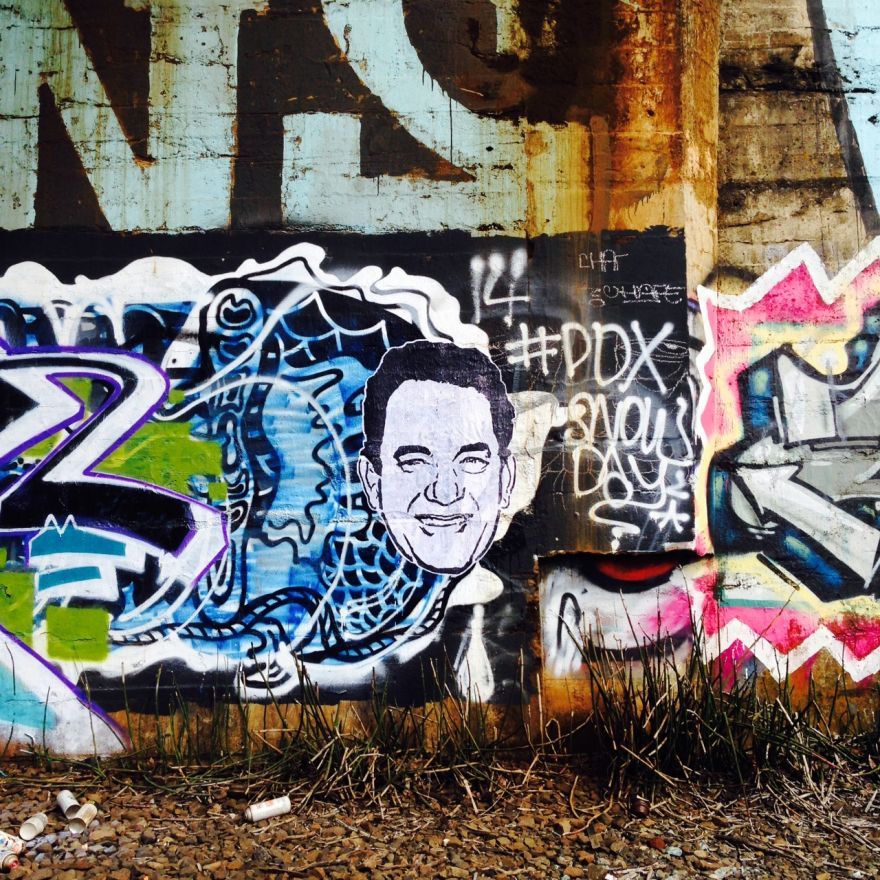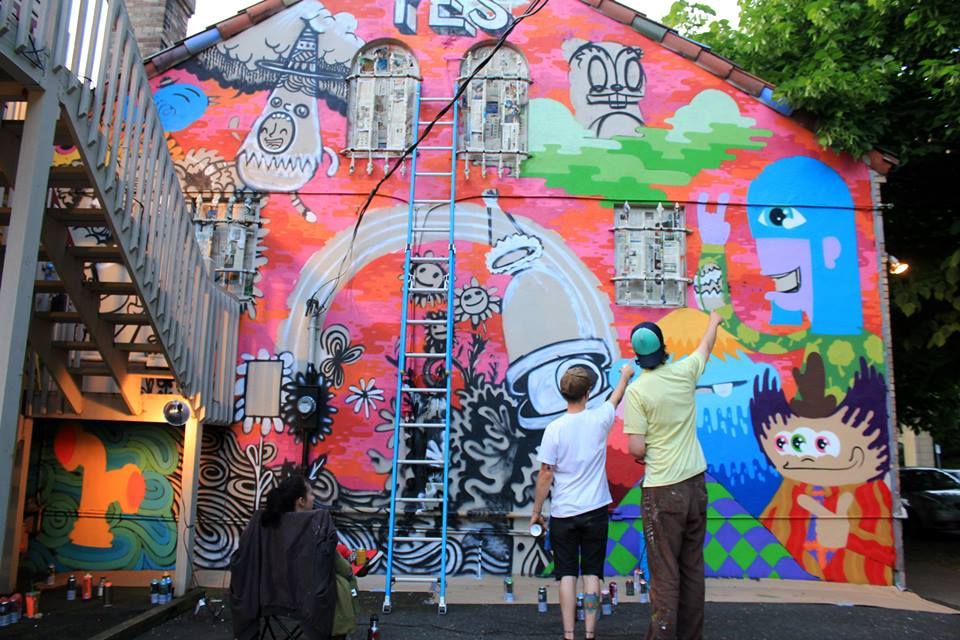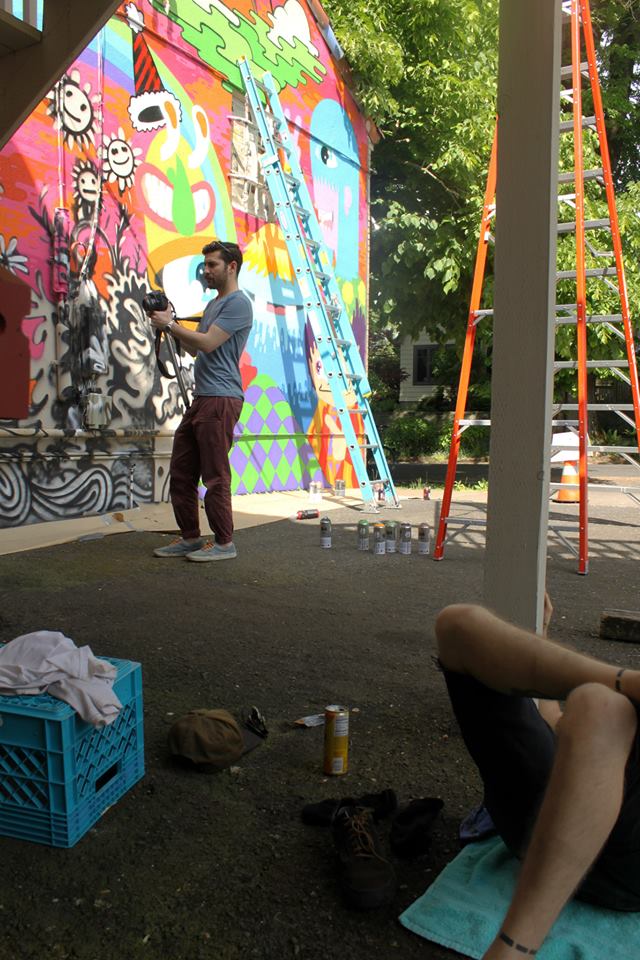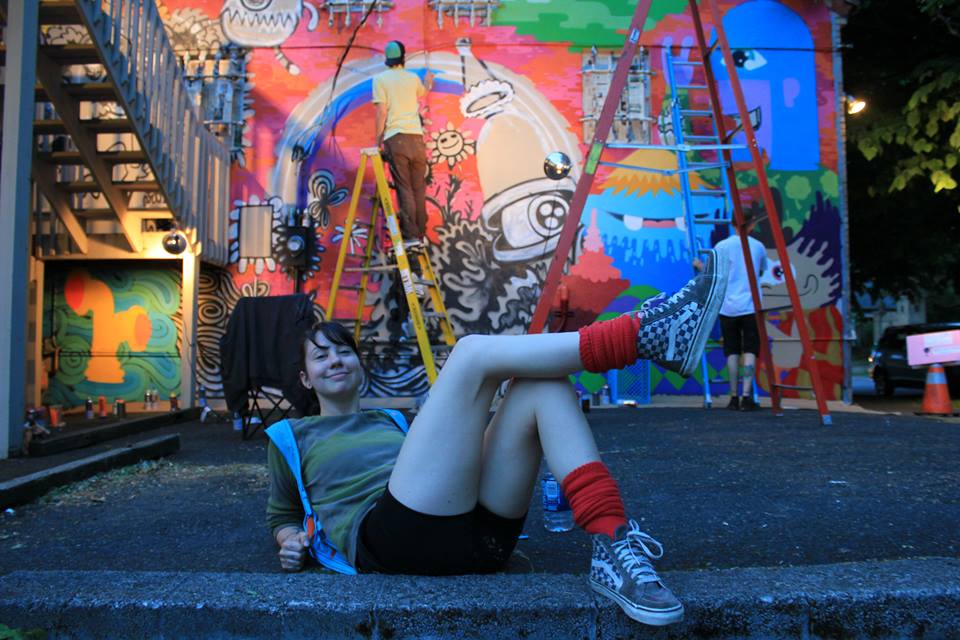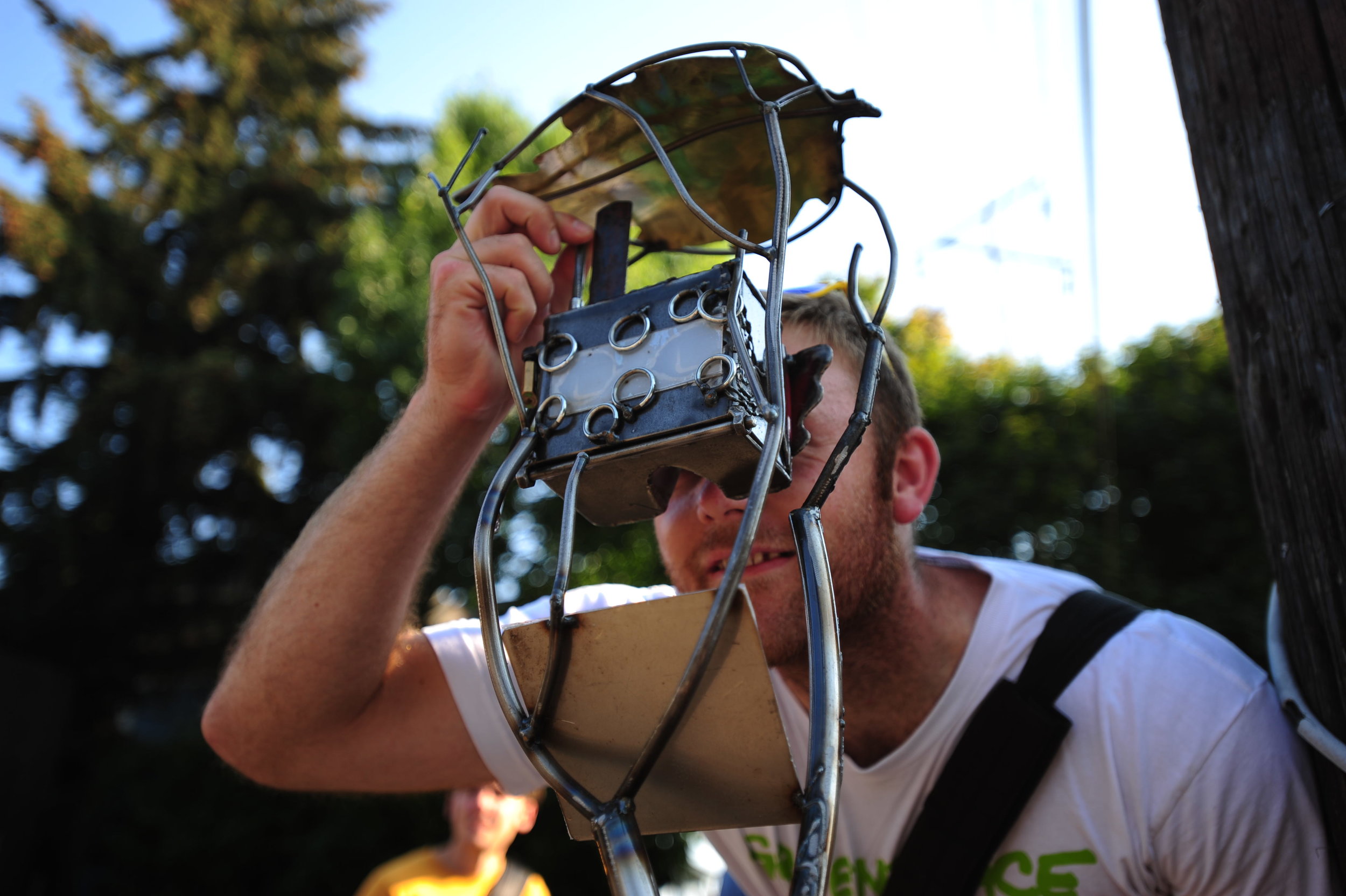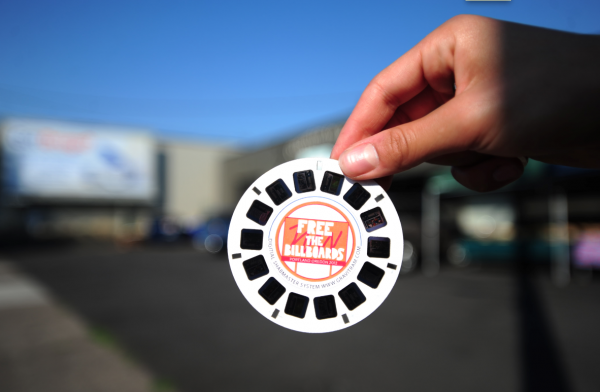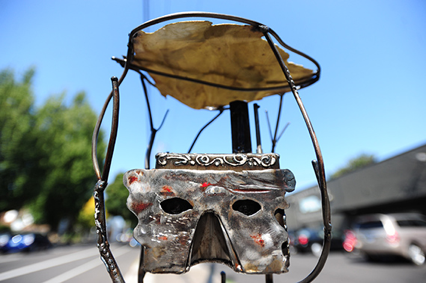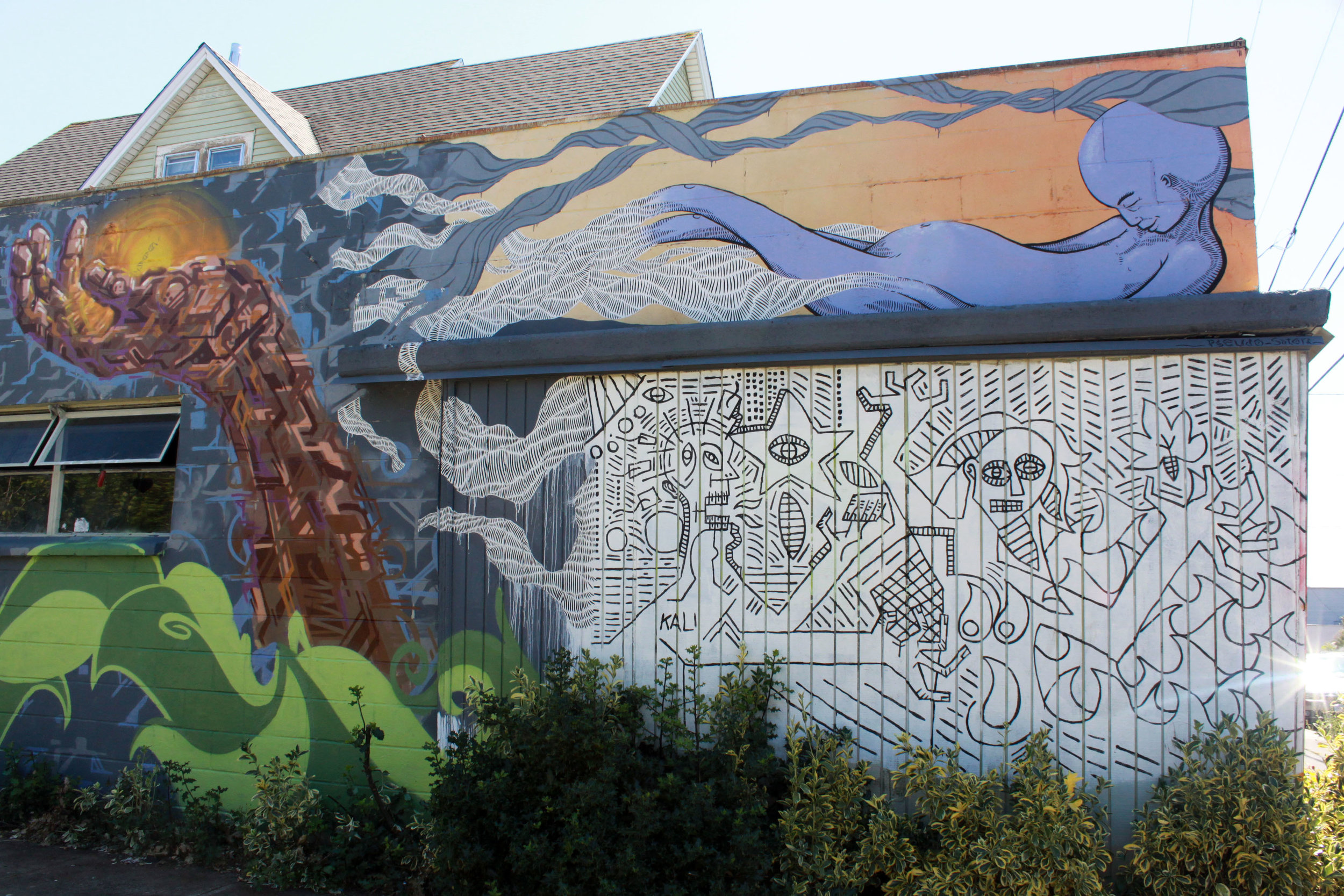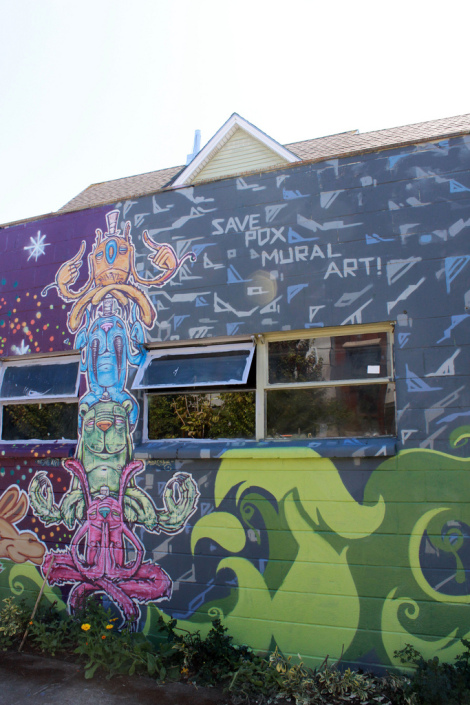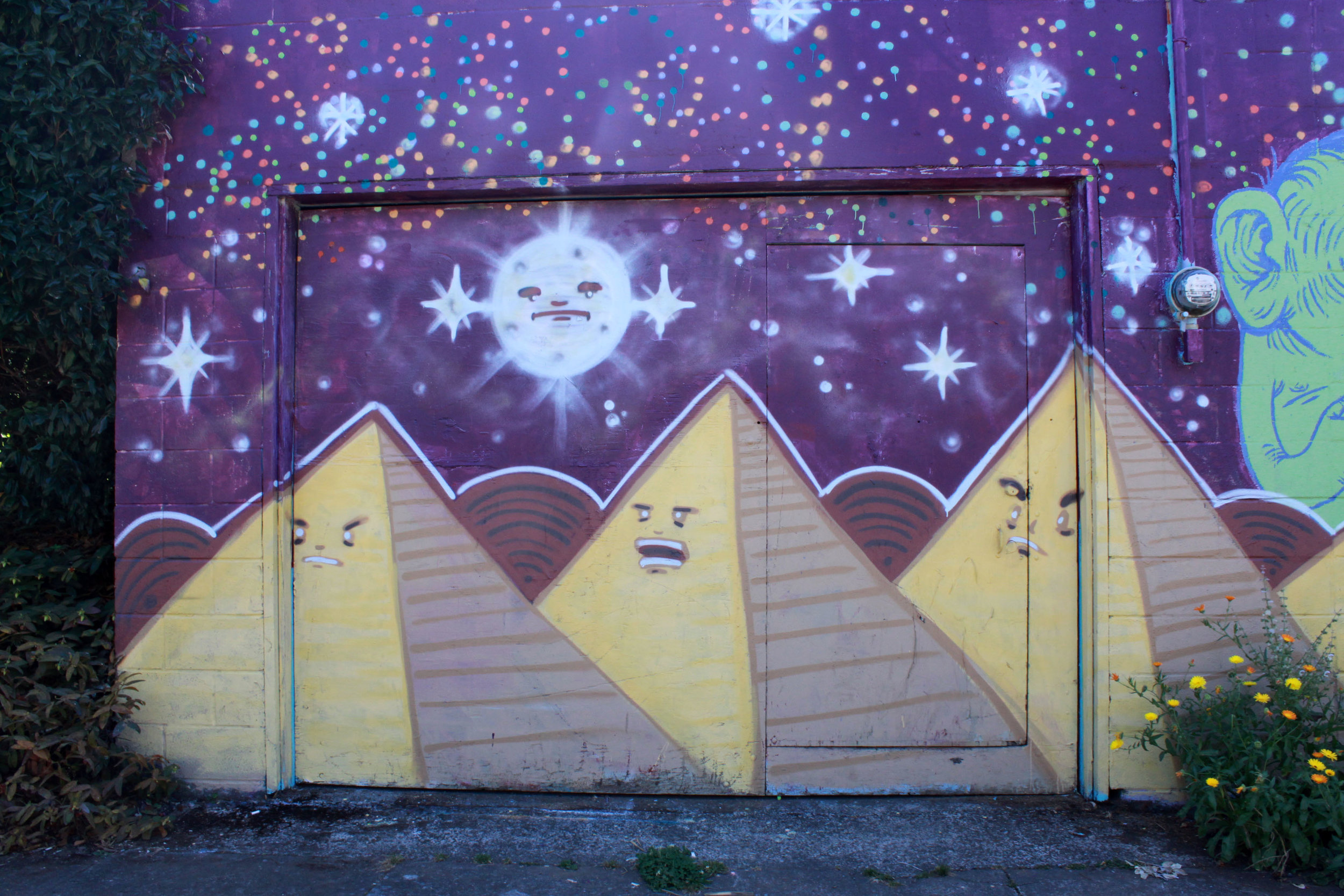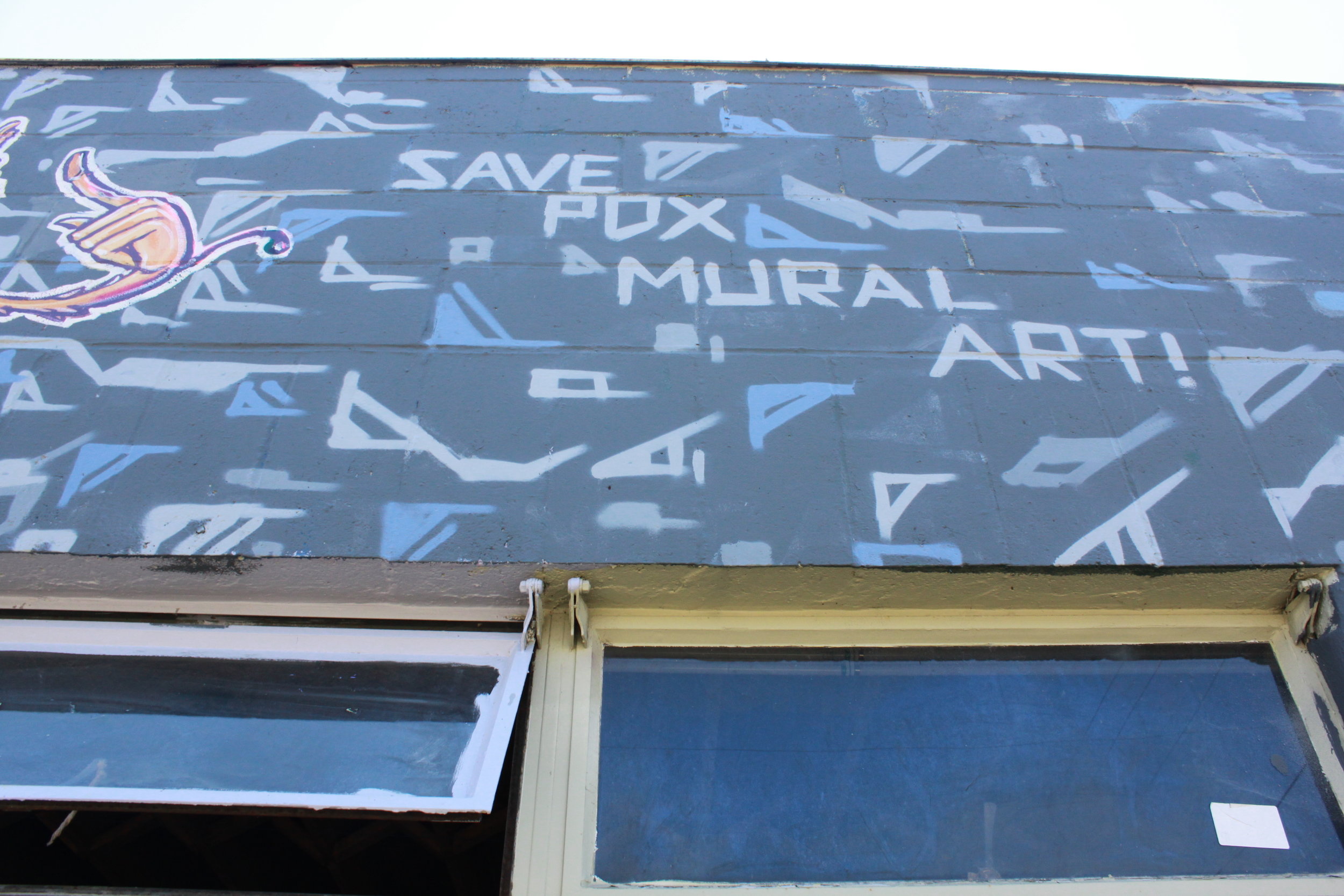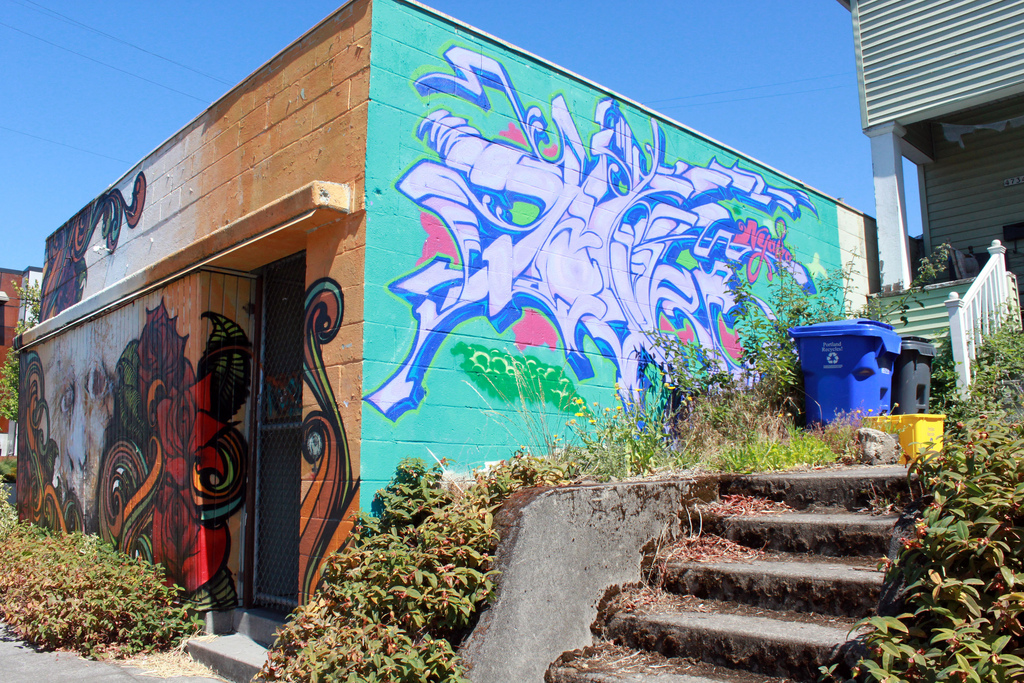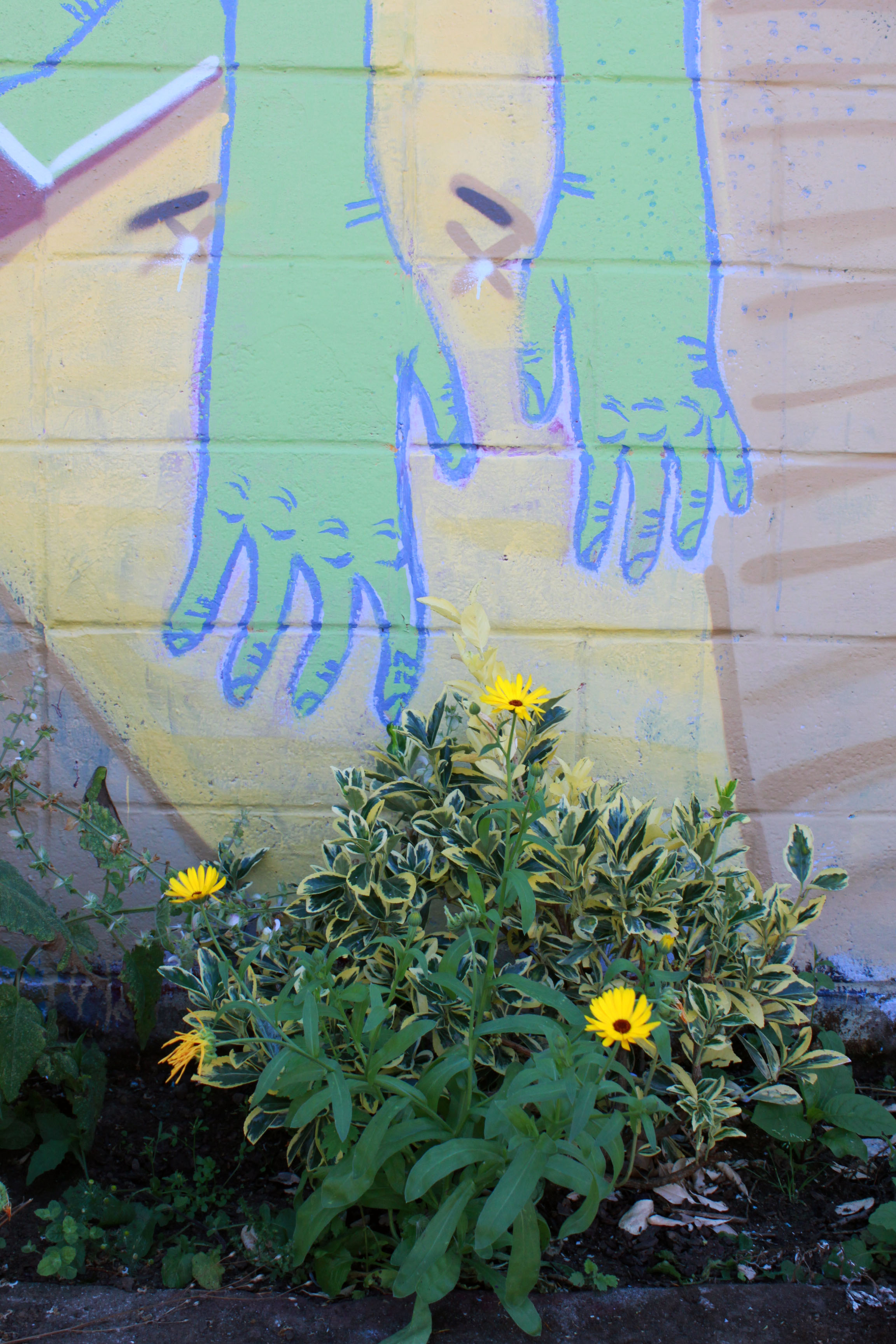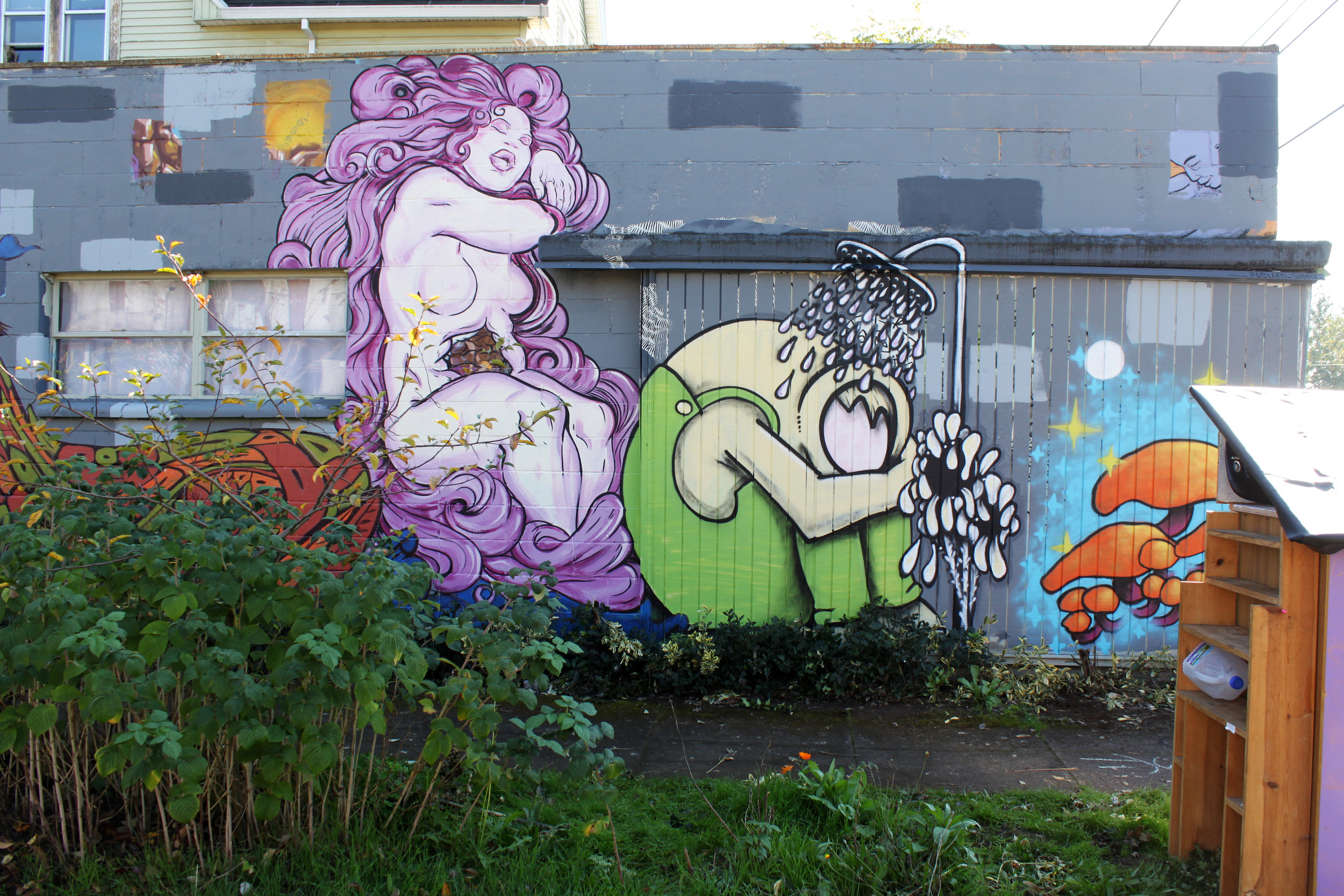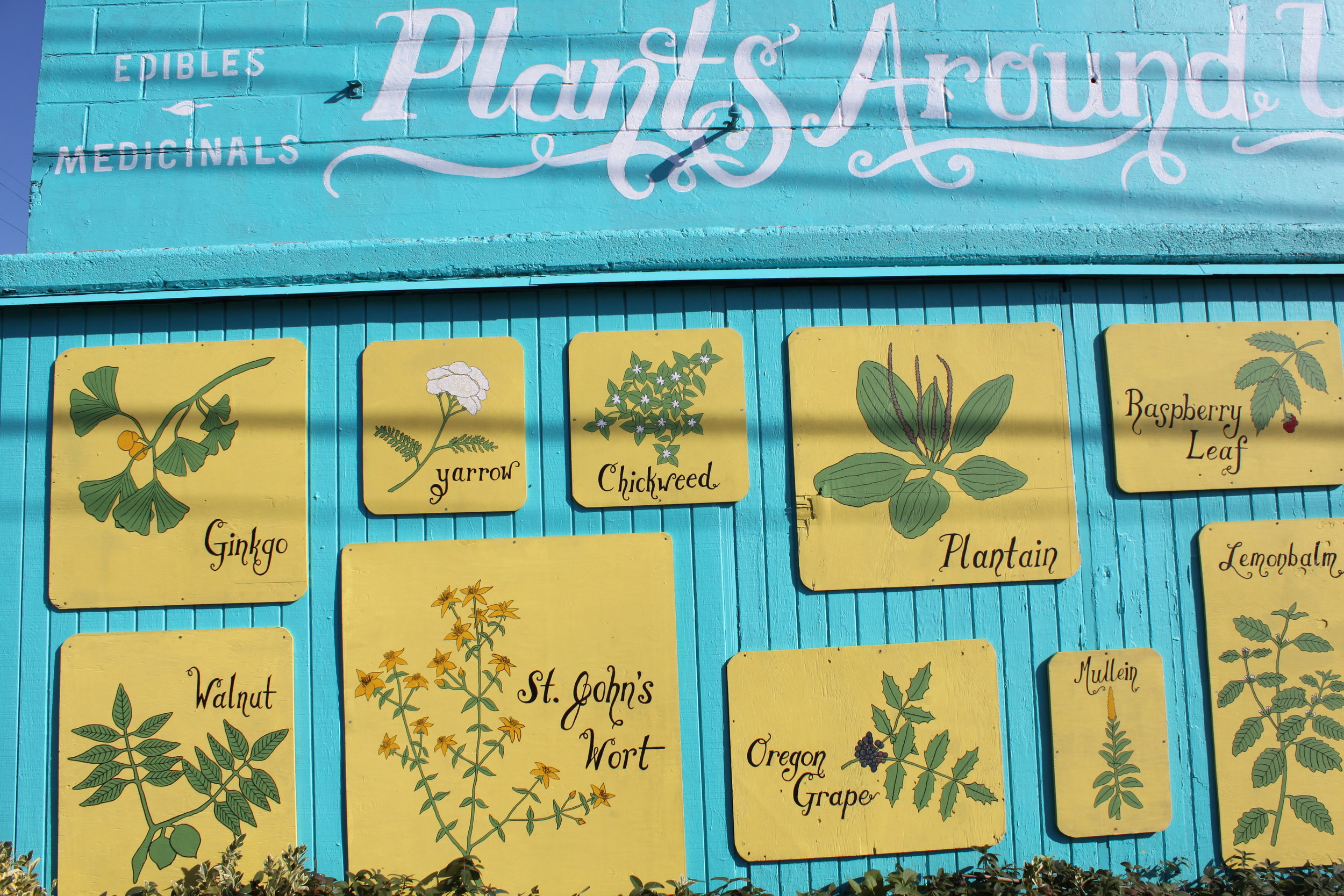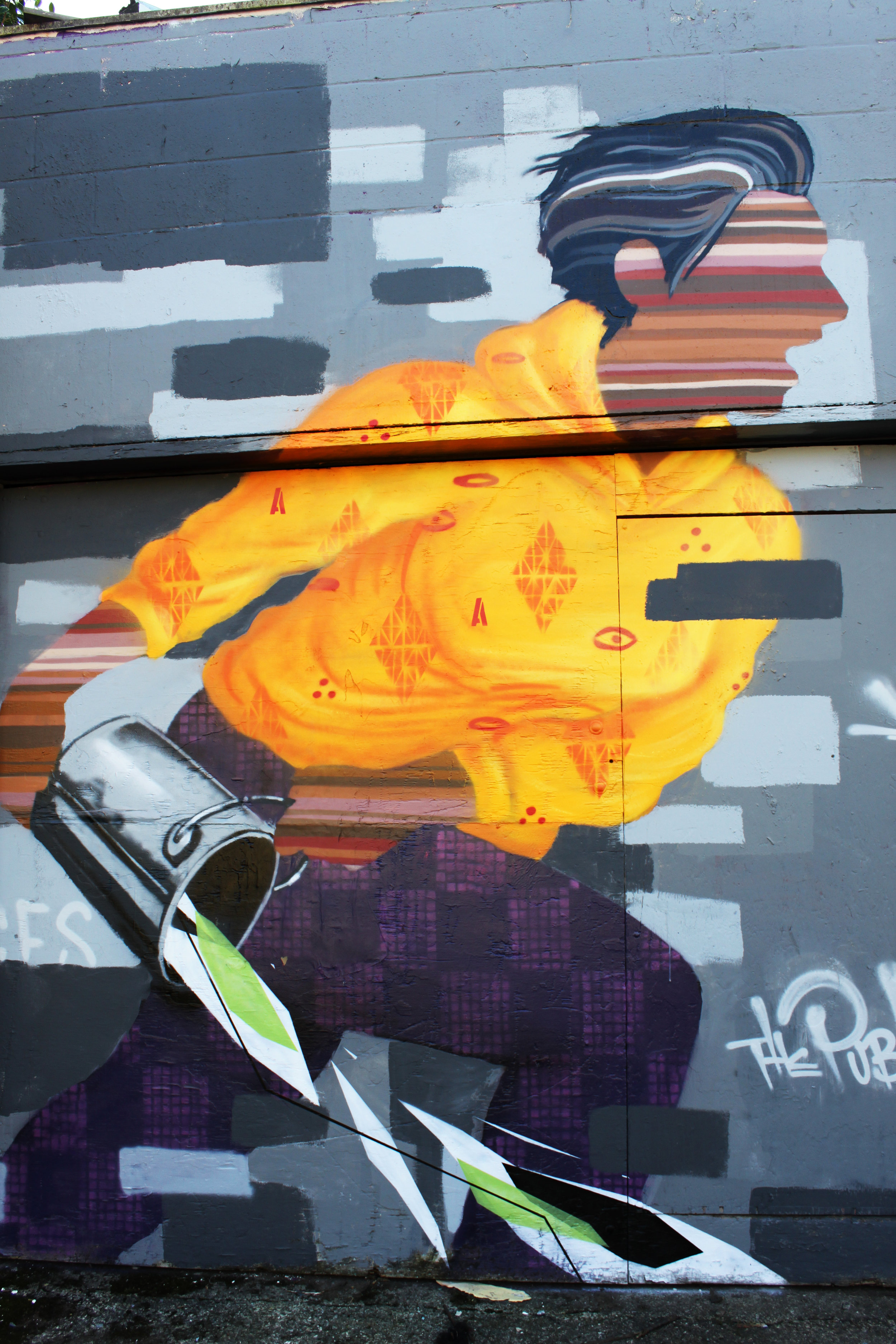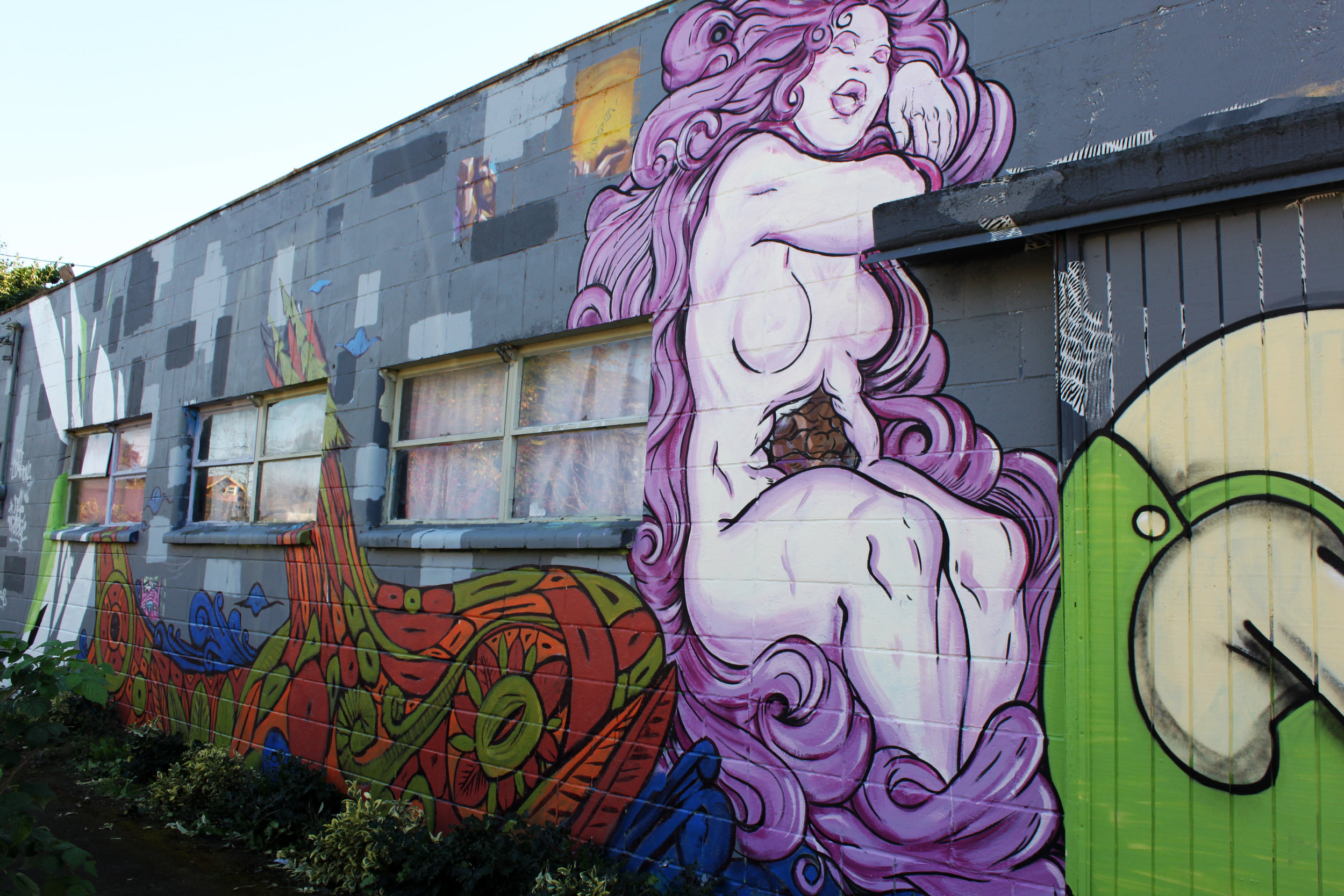PSAA interviewed Claudia Martinez, one of the yarn bombers behind the uglysweaterPDX project. In its second year, uglysweaterPDX yarn bombs Pioneer Square’s bronze art statues with festive ugly sweaters for the holidays.
How did the Ugly Sweater PDX project start? What were the project’s goals?
Our team of knitters this year included Jessica DeVries, Jenny Mosher, Amanda Miller, and myself (Claudia Martinez). Our friend Kyle Stuart, who works for a local branding company called North, wanted to propose a yarn bombing project to Travel Portland. He wanted it to be something that locals and visitors to Portland could enjoy during the holiday season. Problem was, he only knew one crocheter. Luckily, he reached out to his friend Jessica DeVires, who then approached Jenny and me with the idea. I was already familiar with the practice of yarn bombing, so I immediately wanted to join the team. It was an opportunity to what I could normally be doing any Sunday Crafternoon anyways, but on a much grander scale, and more importantly it would be something for the city.
Jessica and Jenny dress up downtown’s deer. [Photo by: Travel Portland]
Did your team face any challenges when trying to make this happen?
I was a little skeptical about the idea of getting paid, and also worried about the longevity of the sweaters. I’ve made art installations before and know that people often remove or take them (just for fun, to keep, or maybe they think they’re trash). The temptation of decorative sweaters would be no exception. As sad as it is to have the sweaters disappear, I’ve come to peace with the idea that if it’s taken, it was such a good piece that people wanted it, or perhaps they actually needed it to stay warm. I knew that if we did this project, we had to be ready for criticisms the possibility of vandalism, but those are things that come with any form of installation art.
Under different (or normal) circumstances something like this could technically be fined as littering, or even theoretically criminal mischief (i.e. interference with private property). Any thoughts on that? What do you think about unauthorized yarn bombing?
I’m a bit biased on this question due to my long-standing affection towards street art. Sometimes you just need to break up the monotony of everyday. The advantage to yarn bombing is that it can be removed with little or no damage to those directly affected by the art. It is the same with wheatpasted art. Any artist will tell you that even their best pieces have at least one villainous critic, so someone’s litter is another’s needed splash of color.
UglySweaterPDX 2014 [Photo by: Gina Murrell]
What were people’s reactions to you putting up these yarn installations? Any memorable interactions?
I was surprised by the amount of positive feedback we received from passersby, both young and old. The older crowds were inspecting the types of knots or stitches used, while the younger people made comments about the time it must have taken to create the pieces. In fact, when one of our first pieces was stolen, some unknown strangers put scarves and gloves on them, as replacement pieces. It was nice to know that our work had touched people so deeply that they made and installed replacement yarn pieces, all just to keep the sentiment alive.
Claudia knits on some leg cozies [Photo by: Jaime Valdez]
It would be great to see publicly-funded yarn art for causes that are for the greater good like this because I really do feel that it reflects well on the city. I was also part of the team that did Bridge for Blankets this past year, a temporary installation on the Broadway Bridge to celebrate its centennial birthday. After, all the blankets were donated to the local homeless shelters and hospitals. Projects like these show that the city wants to support the non-traditional, and it stands behind all sorts of creatives, from traditional painters and muralists, to the lesser-known fabric, yarn, and fiber artists.
Watch a short UglySweaterPDX promo video.
For more photos of this years and last years installations, search #uglysweaterpdx on Instagram and Twitter.
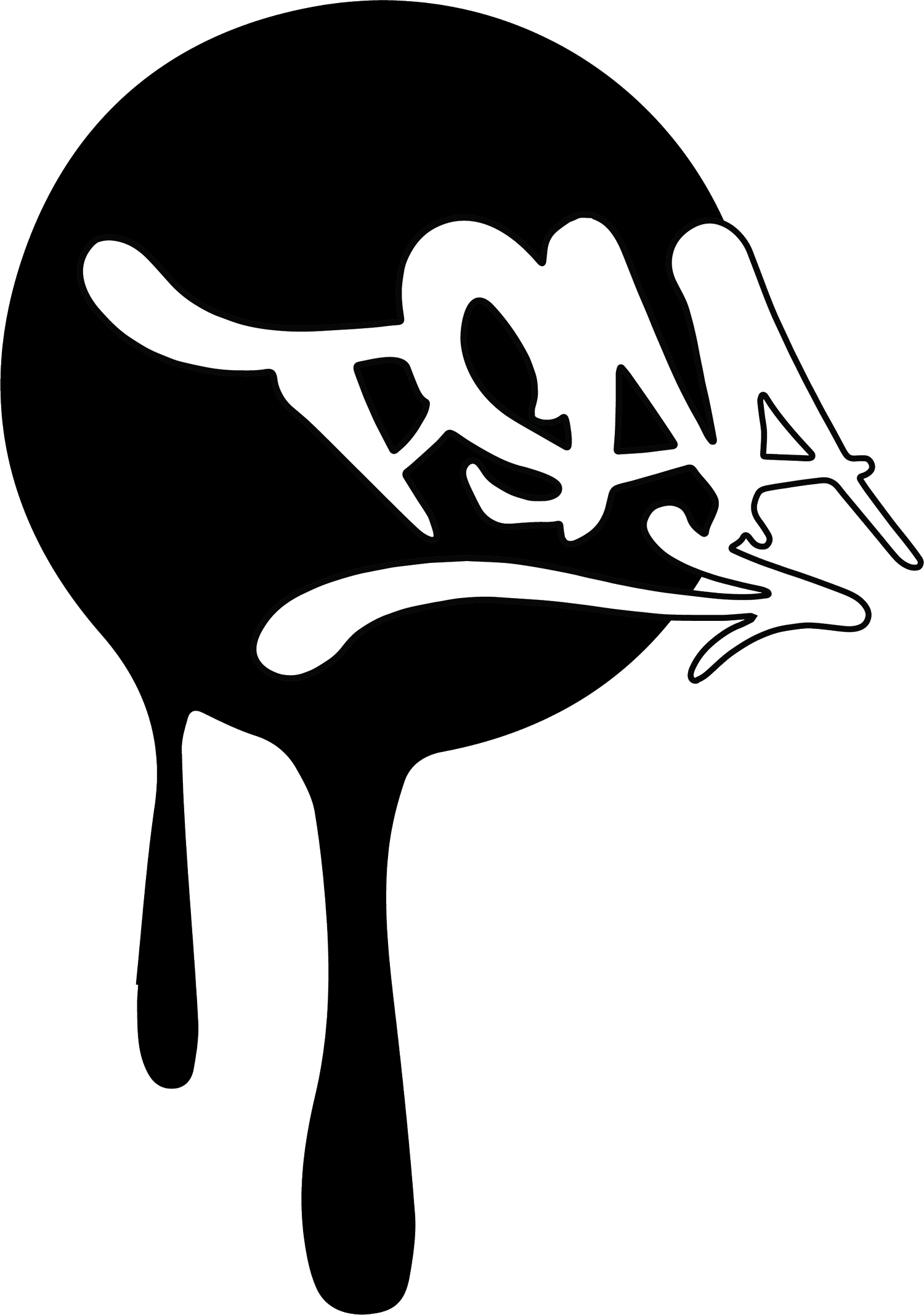
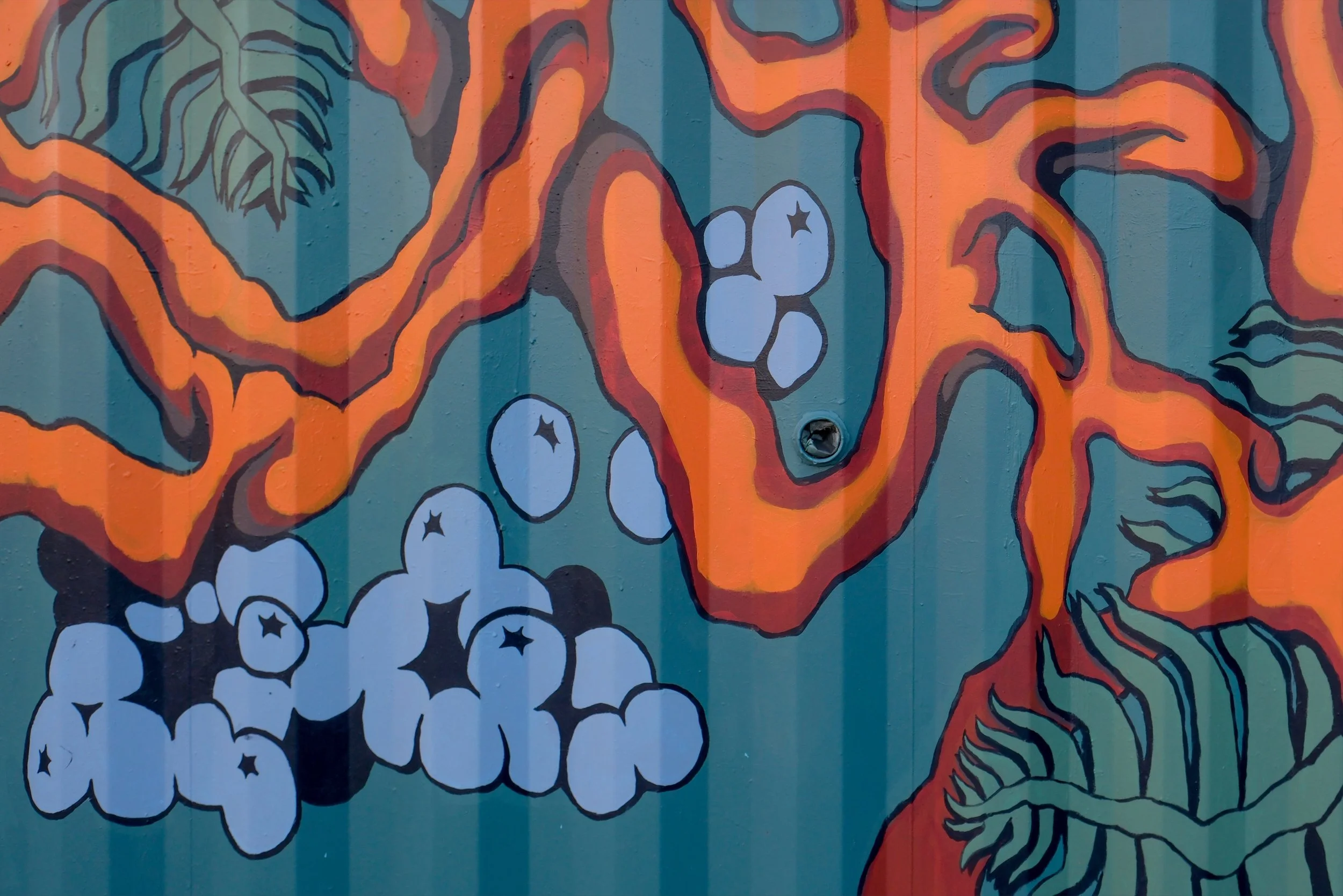

![Jessica and Jenny dress up downtown’s deer. [Photo by: Travel Portland]](https://images.squarespace-cdn.com/content/v1/54c5d2a7e4b0df35f166e6f8/1475722286013-CH04PFRIW9V7RKU22Z3P/Jessica+and+Jenny+dress+up+downtown%E2%80%99s+deer.+%5BPhoto+by%3A+Travel+Portland%5D)
![UglySweaterPDX 2014 [Photo by: Gina Murrell]](https://images.squarespace-cdn.com/content/v1/54c5d2a7e4b0df35f166e6f8/1475722319879-L46UH97OBUGHTGK6B6II/UglySweaterPDX+2014+%5BPhoto+by%3A+Gina+Murrell%5D)
![Claudia knits on some leg cozies [Photo by: Jaime Valdez]](https://images.squarespace-cdn.com/content/v1/54c5d2a7e4b0df35f166e6f8/1475722364327-ZFZ5AA2RI070N7BGIWJU/Claudia+knits+on+some+leg+cozies+%5BPhoto+by%3A+Jaime+Valdez%5D)

